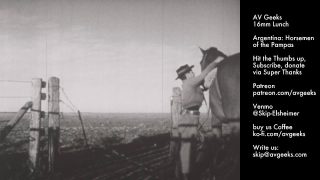
The Story of Stock Library Can AJS (silent)
In the 1940s, the bustling coastal town of Portsville was a hub of activity and progress. With its strategic location by the sea, the town’s economy thrived on maritime trade, agriculture, and a growing industrial sector.
The town’s busy harbor was always filled with the sight of massive ships being loaded and unloaded by powerful cranes. Cargo was efficiently moved onto and off the docked vessels, while silos by the pier stored grain and other commodities awaiting shipment.
As the economy grew, so did the need for infrastructure. Lumber was transported by train cars and skilled workers operated heavy machinery to unload and stack the logs for construction projects. Teams of men were seen at construction sites, drilling and working diligently to erect new buildings that would change the face of Portsville.
The local airport was a hive of activity, with planes constantly landing and taking off. Men could be seen loading bags into the aircraft, as they prepared to carry cargo and passengers to far-off destinations.
The town’s refinery was a symbol of the growing industrialization, with steam rising from its towering structures. Trucks and cars passed by the facility, driving along the busy roads that connected Portsville to the rest of the country.
Despite its growth and progress, the town still maintained a sense of tranquility. The city streets were filled with people going about their daily lives, while the National Mall provided a lush green space for relaxation and recreation.
Surrounding the town, the majestic beauty of the forests and mountains remained untouched by the rapid development. The landscape was a source of inspiration and solace for the residents of Portsville.
Agriculture played a vital role in the local economy. Trains transported mined minerals from the nearby mines, while farmers and their families worked tirelessly in the fields, shoveling hay onto wagons and driving tractors to cultivate the fertile land.
The town’s farms were home to grazing cows, a testament to the thriving dairy industry. Farmers drove tractors through the fields, tending to their crops and ensuring a bountiful harvest to support the growing population.
As a symbol of Portsville’s commitment to harnessing natural resources, the town built impressive dams along the river, controlling the water flow and generating electricity for the community.
The construction boom extended to the industrial sector, with workers laboring tirelessly at building sites and steel mills. They contributed to the growth of the town, forging steel and constructing the skeletons of the new buildings that would soon define Portsville’s skyline.
In this story of progress and resilience, the town of Portsville in the 1940s exemplified the spirit of the era. As the community faced the challenges of a rapidly changing world, they embraced the opportunities that came with growth and development, while still preserving the natural beauty that surrounded them.
We digitized and uploaded this film from the A/V Geeks 16mm Archive. Email us at footage@avgeeks.com if you have questions about the footage and are interested in using it in your project.










